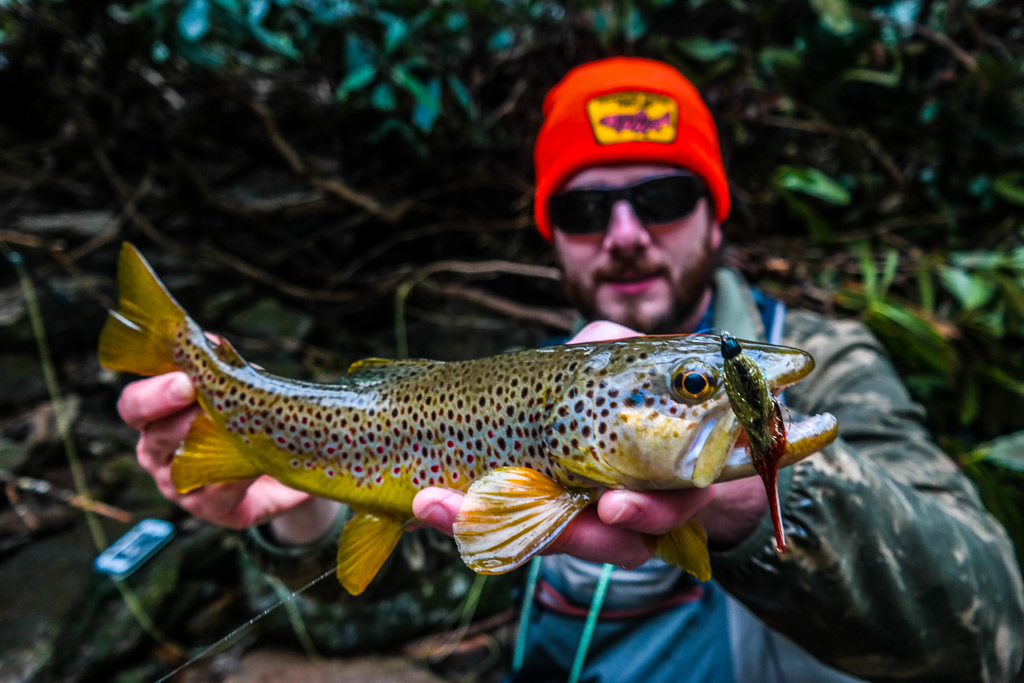Winter can be an unpredictable time of year to fish in the south with conditions ranging from balmy 60 degree days to winter cold fronts pushing through and bringing freezing temps and rain swollen, stained rivers. The latter might make even the most dedicated fishermen opt to stay home and tie flies rather than venturing out on the river, but I’d like to share some tips that might help you when the conditions turn less than ideal.
- Fish stained water – No one wants to pull up to their favorite trout stream and see that the water is high and muddy, however, high off color water can act as a form of cover making trout less cautious. The line between “blown out” and “stained” can be a fine one, but what I look for, ideally, is at least a couple feet of visibility. Even with just a few feet of visibility trout will continue to feed, but the distance they will move to take a fly will shrink, especially when the water is cold and stained. That being said, keep in mind that trout can see underwater much better than we do.
- Large profile flies – As stated earlier, trout won’t move as far in stained water due to decreased visibility – cold water temps can have the same effect on trout. As the water temperature drops, trout become lethargic and will expend less energy to take a fly. These two factors of cold and stained water mean you need flies to be visible and represent a large enough meal to justify a trout expending the energy to eat it. Lots of people tend to fish midges in the winter because that’s about the only thing hatching and midge fishing can be very effective; however, if the water is up and cold, I will tend towards larger stonefly nymphs like a size 08 or 06 Tung Stone, Pat’s rubber legs, or Doublebead Stones to name a few favorites.
- Flash and Color – If you are fishing a double nymph rig in cold, stained water I will often pair a smaller, brightly colored nymph or egg under a larger stonefly nymph. “Junk” flies – especially Eggs, San Juan Worms, and Squirmies, when paired with a large stonefly nymph are more visible and offer a more justifiable meal in cold stained water.
- Streamers – Large nymphs offer a bigger target and more calories for sluggish winter trout and streamers are no exception. Streamers can cover high off color water efficiently and draw fish that wouldn’t move otherwise. Streamer fishing icy water can require a change of tactics. If the water is very cold, try stripping slowly and dead drifting streamers. Swinging flies can also be effective when temperature drops and allows the fly to stay in front of the fish longer.
- Go deep – Don’t shy away from split shot when nymphing high, cold, and stained water – it is important to get as close to the fish as possible. When the rivers start to swell and the temperature is dropping, my nymph rigs grow to match, more weight, heavier tippet, and larger indicators can all be useful in helping your flies get into the strike zone in high water, but size is relative. If you are fishing a stream that would normally call for 6x, a dry dropper, or a small indicator and some light nymphs but the water is high and off color, try going to a bobber-style indicator that will float larger nymphs and split shot. Up-sizing tippet can help playing fish in heavy current – if the water is stained, fish are usually less tippet shy.
High stained water can be a pain to fish but it can also produce some trophies, trout will have their guard down in these conditions so take advantage and get out there!
